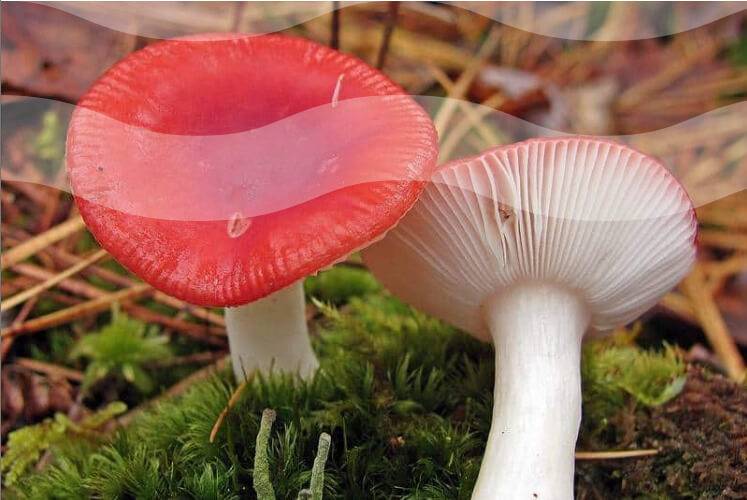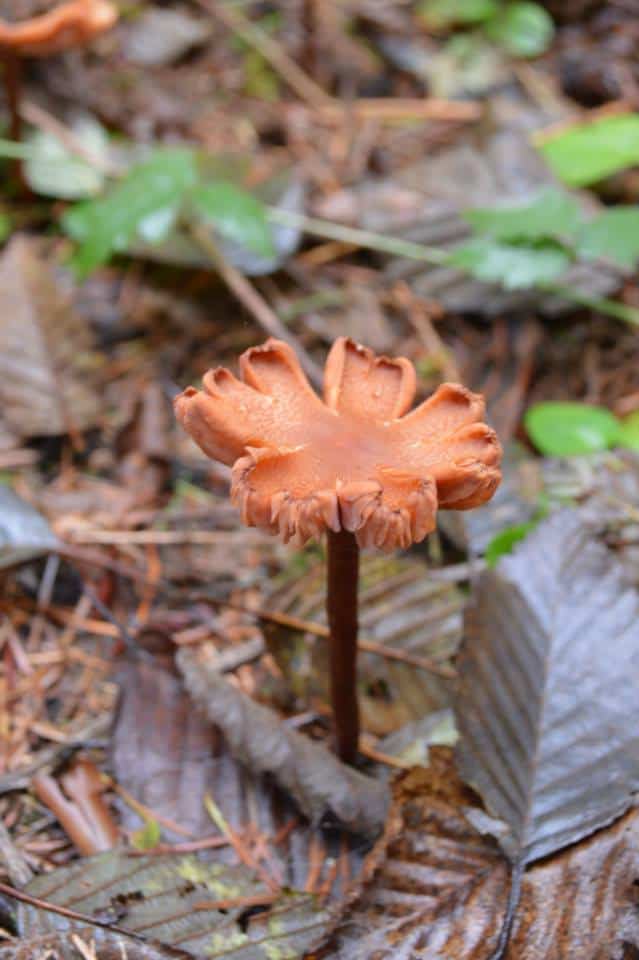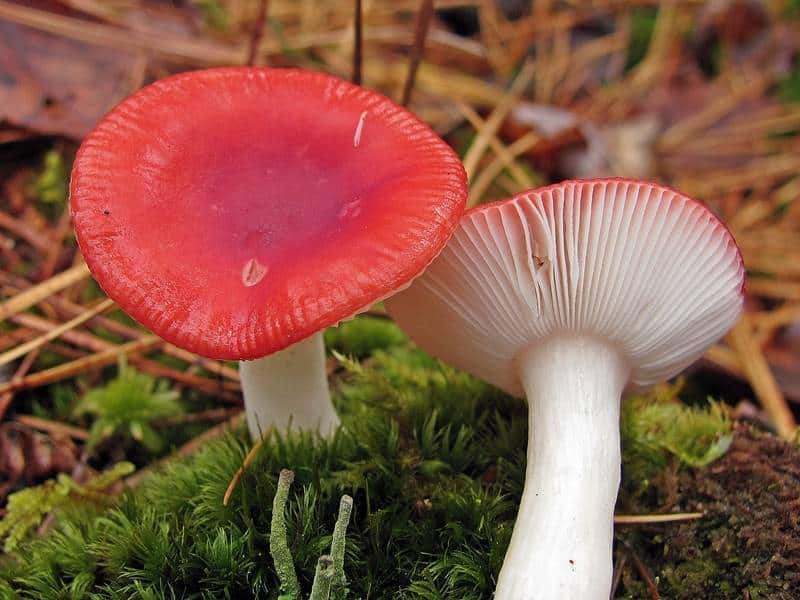Russula Mushrooms are typically common, fairly large, and brightly colored- making them one of the most recognizable genera among mycologists and mushroom observers. Their distinguishing characteristics include usually brightly colored caps, a white to dark yellow spore print, brittle, attached gills, an absence of latex, and the absence of partial veil or volva tissue on the stem.

Angle Wing Mushrooms are a white-rod wood-decay fungus found on conifer wood, particularly hemlock. The flesh is thin and fragile compared to oyster mushrooms.

Contributed by Beck Pittman, Forest Educator, Friends of the Forest
A longer version of this essay was originally published in Fidalgo Living, February 2021.
We have republished on Experience Anacortes with their permission.
I can often be found leading an evenly-spaced line of masked children into the Heart Lake, Whistle Lake, or Little Cranberry Lake corridors to explore and spend some time learning outdoors. As we roam the trails, we keep an eye out for unfamiliar species of fungus and mushrooms and take turns making observations. Kids always find fungus fascinating. We might learn that a mushroom is not the whole organism; a mushroom is a reproductive structure simply there to release spores, and the rest of the organism lives underground as mycelium. Sometimes a fungus’ mycelium—the underground network that allows metabolism and communication—is so expansive that a mushroom in Washington could very well be connected to others across state and country borders.
The Anacortes Community Forest Lands afford the community of Anacortes with one of the highest rates of greenspace-per-capita in the nation. That this swath of forest survived the prolific logging of the West a few generations ago—and isnow protected for the future by the surrounding human community—means that waterways and forests are buffered by healthy riparian zones and wetlands; high hills left by the glaciers eons ago now boast a medley of conifer trees which comb fog from the air; water drips off tree needles into the soil, and these soils percolate our winter rains back into the ground. Some of the many benefits of a contiguous forest space, like the ACFL, are the permeable landscape surfaces and the water management they provide. And since fungus thrives in moist environments, the breadth of connected ecosystems protected in the Anacortes Community Forest Lands make the ACFL a haven for this enticingly curious, moisture-loving life form.
As decomposers, fungi are an ever-important ecosystem service providers. They can be found on rotting wood, growing in terraces on snag tree trunks, popping out of soil, embedded in leaf tissue, or living in hybrid with algae and cyanobacteria as a composite organism: lichen. While wandering through the ACFL I’ve learned more about different kinds of Shelf Fungus, Russulas, Angel Wings, Turkey Tail, Witch’s Butter, and Tar Spot fungus (which the kids call “zombie fungus” because the fungus keeps the surrounding leaf tissue it lives in alive). I try to never leave our office without our copy of Mushrooms of the Pacific Northwest by Steve Trudell and Joe Ammirati, and another mushrooming guide called All that the Rain Promises and More…A Hip Pocket Guide to Western Mushrooms by David Arora. Arora is known for authoring the “bible of mushrooming,” Mushrooms Demystified.
Humans have a long history of using mushrooms for dying (wool, fibers, fabrics), cooking and cuisine, medicine, and more. It is only natural to feel excited about learning more about fungus and possibly going to forage for your own mushrooms. Remember, land conservation rules state there is no harvesting in the ACFL, but some National Forests have permitting processes to allow for mushroom foraging. Sherwood Stolt of the Puget Sound Mycological Society writes, “generally the direct approach to finding what rules apply is to call the lowest level (district, area, park, etc.) manager and ask. Call during weekdays and not near the lunch hour and if the person answering seems uncertain ask for a supervisor or someone that issues permits.” Additionally, never eat any mushroom unless you are 100% certain it is edible, you have tasted a small amount to test for allergic reactions, and have harvested the mushroom many times prior during practice harvests. If you are a beginner, make sure you take a class with experts, like the folks at the Puget Sound Mycological Society.
Fungus and mushrooms are beautiful, weird, and can be found anywhere and in every color. Almost everyone I meet in the ACFL is excited to learn more about fungus. Fungus is not a plant or animal, they’re not bacteria, protists, or another form of life. When we learn about fungus, we must depart from thinking amongst familiar categories. We’re urged by the situation to use a little more imagination; we’re reminded how vast nature really is. Perhaps this is why people are fascinated with fungus. Embark into the ACFL, and you’ll find something that catches your eye.
The Anacortes Community Forest Lands are a community space and invite peaceful contemplation of nature for all who visit. If you’re heading out to our neck of the woods while curious to learn more about fungus, remember to please tread lightly. The Anacortes Community Forest Lands have enough miles of trails for everyone, so please stay on them, and be a good steward of nature by following all park rules.
Friends of the Forest works in conjunction with the Forest Advisory Board and the City of Anacortes and is dedicated to the preservation of the Anacortes Community Forest Lands through education, outreach, and stewardship. They provide educational opportunities for Anacortes students as well as community members throughout Skagit County so they can learn about the natural world first hand, and develop a respect for its magic and majesty. For more information on their community hikes, classes, and volunteer opportunities check out their event calendar here.
